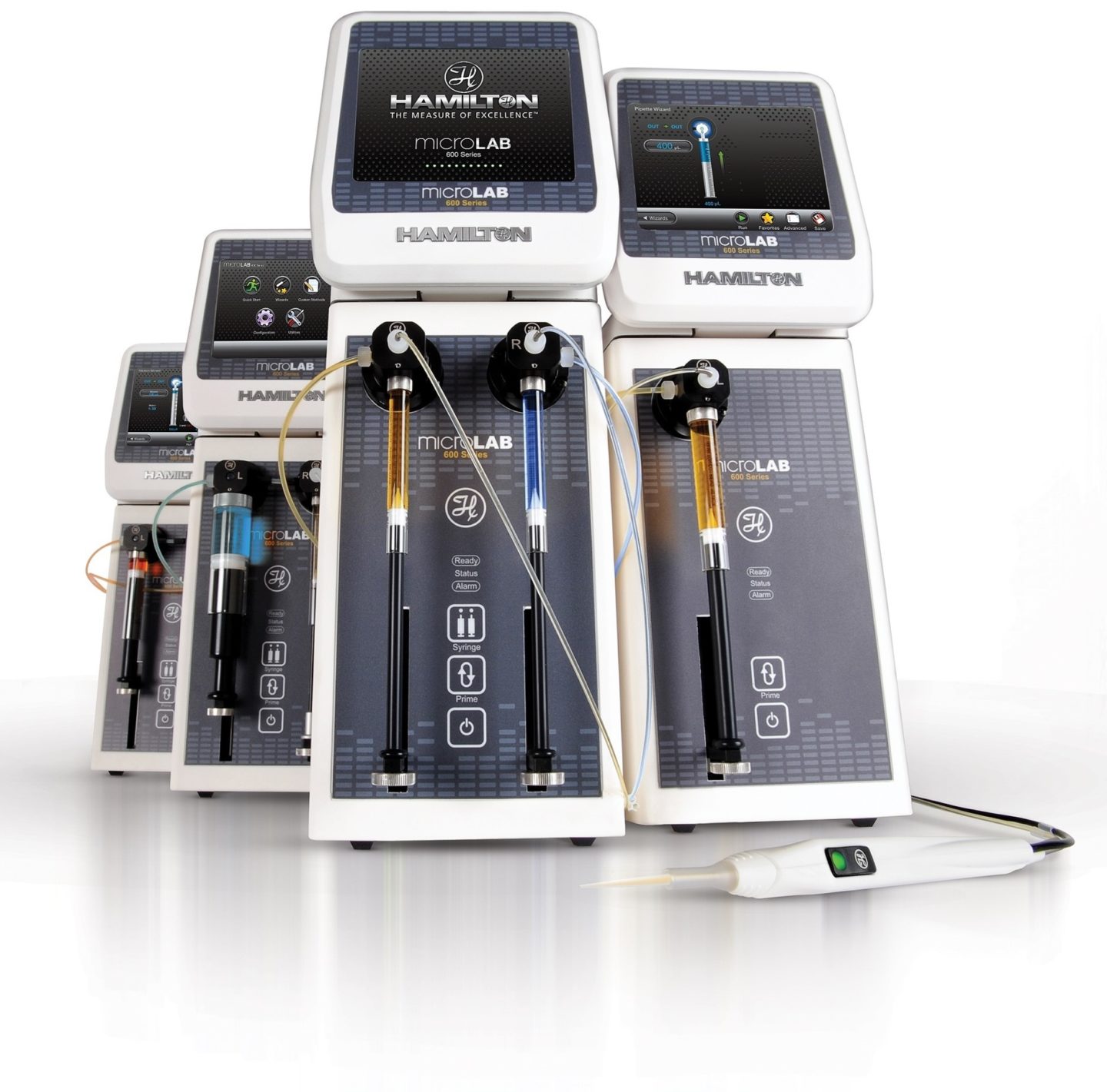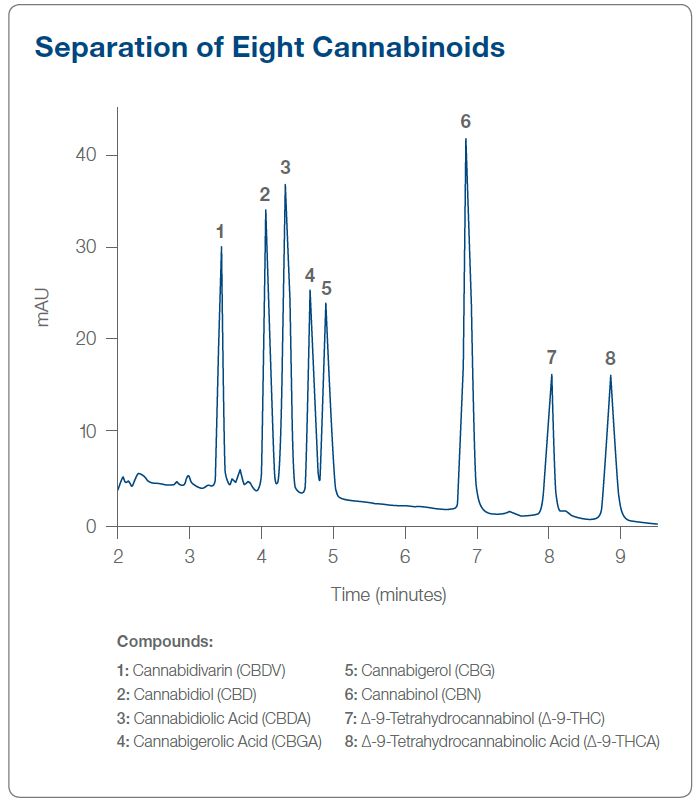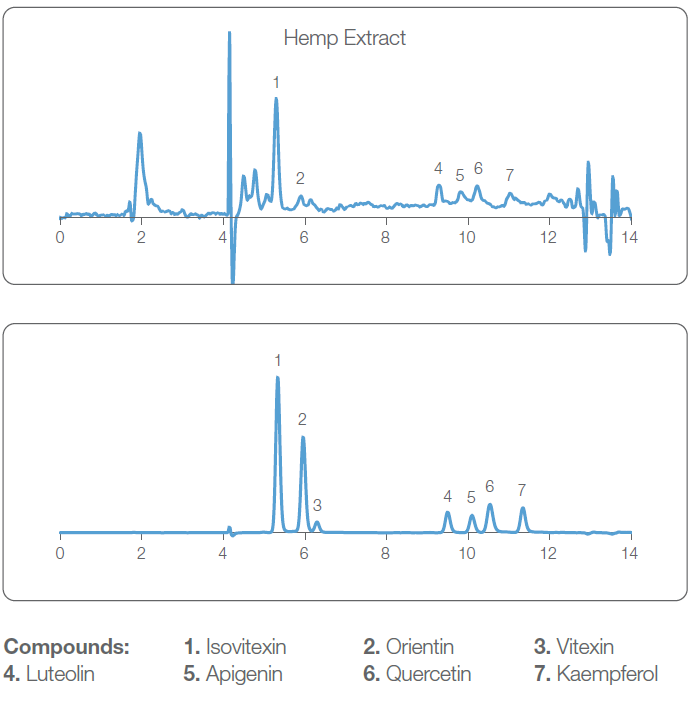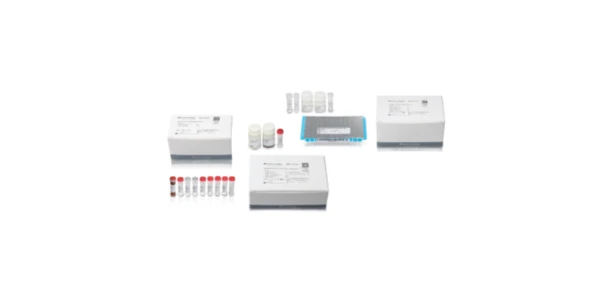The Hamilton HPLC Applications Library: A Resource for Cannabis Testing Solutions
An interview with HPLC applications chemist Adam Moore PhD
Technical knowledge and experience are valuable resources to the scientific community, particularly in growth industries where cutting-edge insight is both needed and welcomed. Hamilton has built a series of application libraries based upon the work of talented scientists in the areas of robotics, automation, HPLC, and other key product areas.
We recently spoke with Adam Moore PhD, Applications Chemist at Hamilton Company, to learn more about the exciting applications of the company’s HPLC technologies in the rapidly growing cannabis and hemp testing industries.
LabX – You’ve done amazing work applying Hamilton technologies to challenges in the cannabis and hemp testing fields. In the application note titled “Cannabinoid Sample Preparation: Increased accuracy and time savings for HPLC analysis”, you describe features of the Microlab 600 automated diluter/dispenser device in the context of sample preparation. We reported on the Microlab 600 in a previous article, and detailed the advantages of automated dispensing workflows over manual pipetting. Can you explain the features of this instrument that make it ideal for use with HPLC?

AM – The great thing about the Microlab 600 is that it doesn’t get bored or distracted while performing sample dilutions or dispenses. Sometimes in large scale sample preparation, the actions become monotonous to the point that mistakes and slight errors can be made. The Microlab 600 reduces the production errors associated with sample prep. When HPLC quantification is needed for a sample, the use of the Microlab 600 provides the analyst a peace of mind that the samples are of the correct dilution and will not overload the column, which can lead to even larger errors and eventually downtime. Being able to perform multiple dilutions on a sample, in order for a particular sample to fit into a calibration curve, makes the Microlab 600 indispensable.
LabX – The objective of the application note was to compare the analytical performance of manual hand pipetting to the performance of the Microlab 600 diluter/dispenser. Can you provide an overview of the experimental setup that was used in this study?
AM – The experimental set-up was quite straight forward. The instrument was primed with methanol to ensure no bubbles were within the supply lines or syringes. As a side note, in this particular method, methanol was used, but any common extraction solvent can be used, i.e., ethanol, hexanes, or acetonitrile. Strong acids, strong bases, or virtually any other solvent can be used in the system. The samples were weighed and diluted with either a hand pipette or the Microlab 600. Following the extraction diluent addition, a sonication of the samples was done to ensure complete extraction of the desired products. To prepare the samples for HPLC analysis, each sample was centrifuged to remove solids and to generate a clear mother liquor which was then diluted with methanol by either a hand pipette or the Microlab 600.
LabX – What were the most valuable (or perhaps unexpected) results of the study?
AM – The best thing to come out of this study was a solid marker of how much deviation is associated with the use of hand pipetting versus an automated instrument (such as the Microlab 600). The reduced error associated with the use of the Microlab 600, in any market - let alone cannabis, where the regulatory bodies are just getting started - is worth its weight in gold. One unexpected, but relevant aspect of the study was the amount of time that the instrument saved the user. As documented in the note, the decreased time spent fixing errors in addition to the decreased time spent manual pipetting provides a significant increase in productivity and throughput.
LabX – In the application note titled “Separation of Eight Cannabinoids” you describe an accurate, cost effective, and robust separation method using HxSil C18 (3 µm) columns. What qualities of Hamilton RP-HPLC columns make them suitable for cannabinoid purification? 
AM – Hamilton RP-HPLC columns are great for quantification applications. The silica offerings are all type B silica with either C8 or C18 functional groups that have been end capped to prevent silanol stripping of the stationary phase during normal use. The PRP-1 stationary phase which we employed for some cannabinoid applications is great because it doesn’t have any silanols to strip, and always provides a great separation. What makes the Hamilton columns ideal is that they perform with the same quality no matter the pH (1 – 13) or temperature (0 - < 110 °C). Not that the cannabis applications need either that temperature or pH range, but it is there if you need it. Similarly, if you do happen to gunk up your column, there are more aggressive cleaning conditions that can be used to regenerate your column.
LabX – Can you provide a brief overview of the experimental setup for this study?
AM – The sample prep was similar to that described previously in Microlab 600. The solid sample was macerated in methanol followed by sonication for 15 min to ensure adequate extraction. Samples were centrifuged to facilitate solids removal. The supernatant was then aliquoted to various dilution concentrations for analysis utilizing our HxSil C18 column. We prefer the 3 µm particle size for the HxSil C18 column but the 5 µm variety works adequately for those that only need THC and CBD quantification. The method developed for the 8 cannabinoids was found to work very well as an isocratic method lasting about 20 minutes/run, however, if a faster method is desired, the stepped gradient also provides consistent results in a shorter time frame. We found that, for these particular compounds, ensuring that the pH is at 3.5 is the key to getting consistent retention times. The ammonium formate was used as a mobile phase modifier to help facilitate the analytes’ interaction with the stationary phase. Similarly, we chose to add modifier to the organic eluent to aid in peak resolution.
LabX – How are these columns best suited for the cannabis testing environment?
AM – The end capped silica allows for high throughput coupled with reliable peak shape and retention times. The two different methods that we offer, isocratic and stepped gradient, give the user a way to extend their column use. The isocratic method allows the user a super simple method to run that minimizes the required time to equilibrate between runs. The stepped gradient is great for those that want a faster method, for increased throughput, while still being able to flush the column of all the other lipophilic compounds that may have been extracted in the process, thereby providing increased column longevity. Additionally, the use of ammonium formate as a mobile phase allows for versatility in the mode of detection. Its use offers the end user a choice, whether that is mass spectrometry or UV detection.
LabX – The application note titled “Cannabinoid’s Wingman: Determination of flavonoids in hemp by reversed-phase HPLC” explores purification of non-cannabinoid compounds called flavonoids. There is some conjecture over their applications and value. In your view, why are flavonoids important?
AM – That is a great question. In my opinion, flavonoids are those ancillary compounds that provide the nuances in different varieties of cannabis or hemp. They offer different flavor profiles, and provide an additional option when trying to market cannabis to the consumer. In addition to adding to the flavor profiles of various strains, they can also contribute health benefits. Flavonoids have been implicated as reactive oxygen scavengers, CB2 receptor activators, and are theorized to provide a more pleasant experience through their entourage effects. Some notable benefits include, anti-cancer, anti-aging, DNA repair, and anti-inflammatory properties. We feel like these are important for people to know about. Everyone is mostly concerned about how much THC or CBD is quantified, but the roles that these ancillary compounds play show that cannabis is more than just a one hit wonder so to speak.
LabX – Can you provide a brief overview of the experimental setup for this study? 
AM – This application was great for use with our PRP-1 resin. Similar to other extractions, the solid material was extracted with EtOH:H2O (3:1) via sonication for 15 minutes, followed by centrifugation and dilution of the mother liquor with a 1:1 EtOH:H2O mixture. The separation was most successful when an aqueous eluent modified with formic acid coupled with tetrahydrofuran (THF) as the organic eluent. The best part of all the application protocols that we develop is that, because our resin is so robust, we can perform all of our experiments without filtering. We have adopted the dilute-and-shoot methodology because the resin is exceptionally robust. We also try to design all our methods for the fastest separation with the most resolution of all peaks.
LabX – Based on your results, what makes the PRP-1 column suitable for flavonoid testing in hemp?
AM – The PRP-1 column is great for a number of reasons. First, swelling normally associated with polymeric columns is non-existent with PRP-1, so any eluent can be used without over pressuring your system. Secondly, the π-π, n-π, and hydrogen bonding interactions are greatly enhanced with the use of THF. The robust nature of the resin offers great reproducibility under THF conditions. The resin’s porosity enables both dilute-and-shoot applications and is optimal for HPLC systems that require a lower pressure column. The porous particles offer good peak shape and fast, efficient, resolution, and work great with all eluent modifiers and offer a great buy for those that need longevity for their money.
Summary
As the cannabis industry continues to grow, solutions are required for persistent and emerging challenges. Issues pertaining to testing accuracy and precision are becoming critically important as state and federal guidelines tighten. Throughput, cost, and robustness are having increased impact on the efficiency of testing operations. The emergence of flavonoids and other compounds of significance present unique analytical requirements.
Fortunately, the industry is benefiting from technical experience and knowledge, and skilled application of state-of-the-art technologies, to these challenges.
This editorial was written by LabX and published in partnership with Hamilton.
More information on Hamilton HPLC products
View Hamilton listings on LabX.com
Visit the Cannabis Application page for further insights and product listings.










